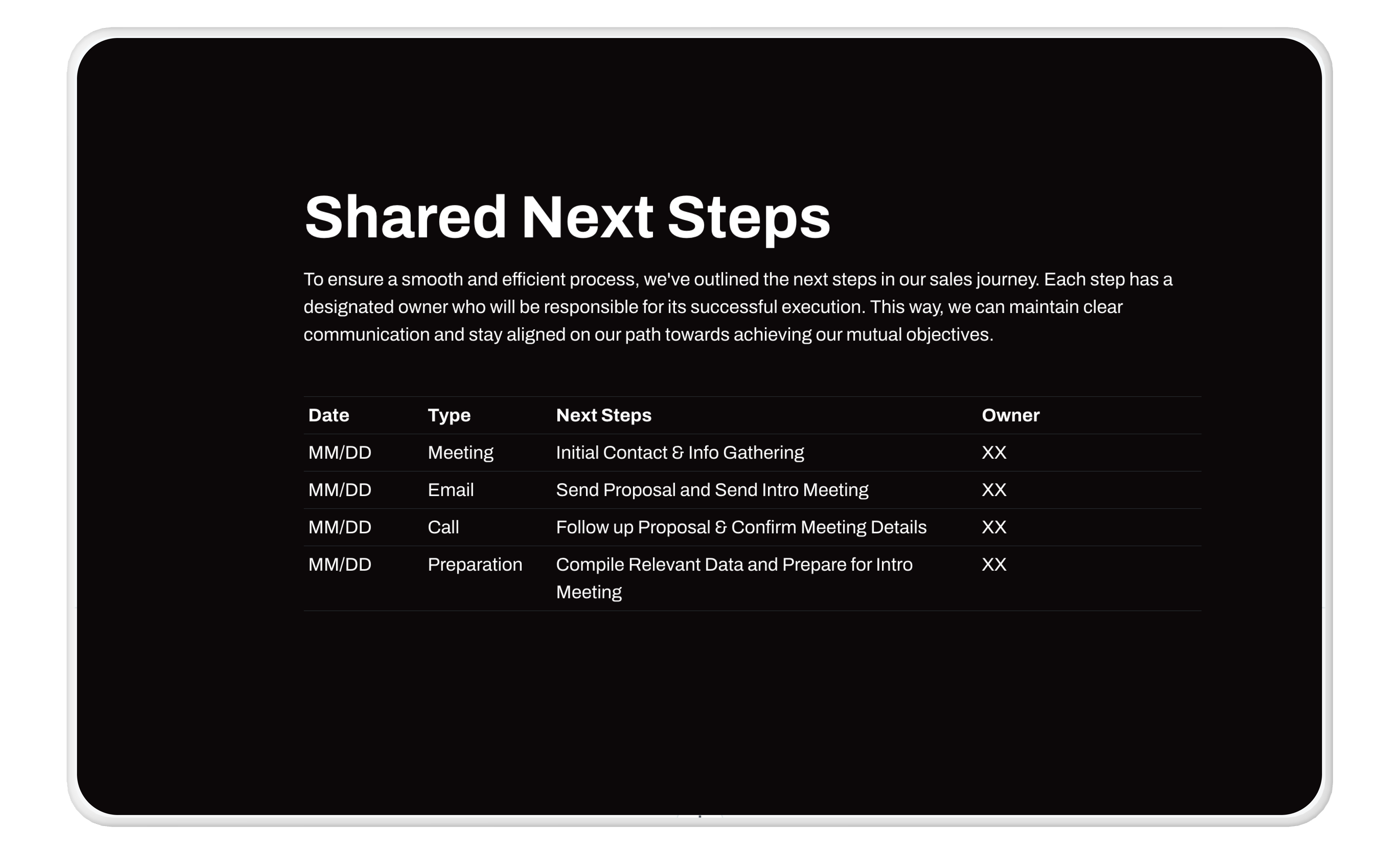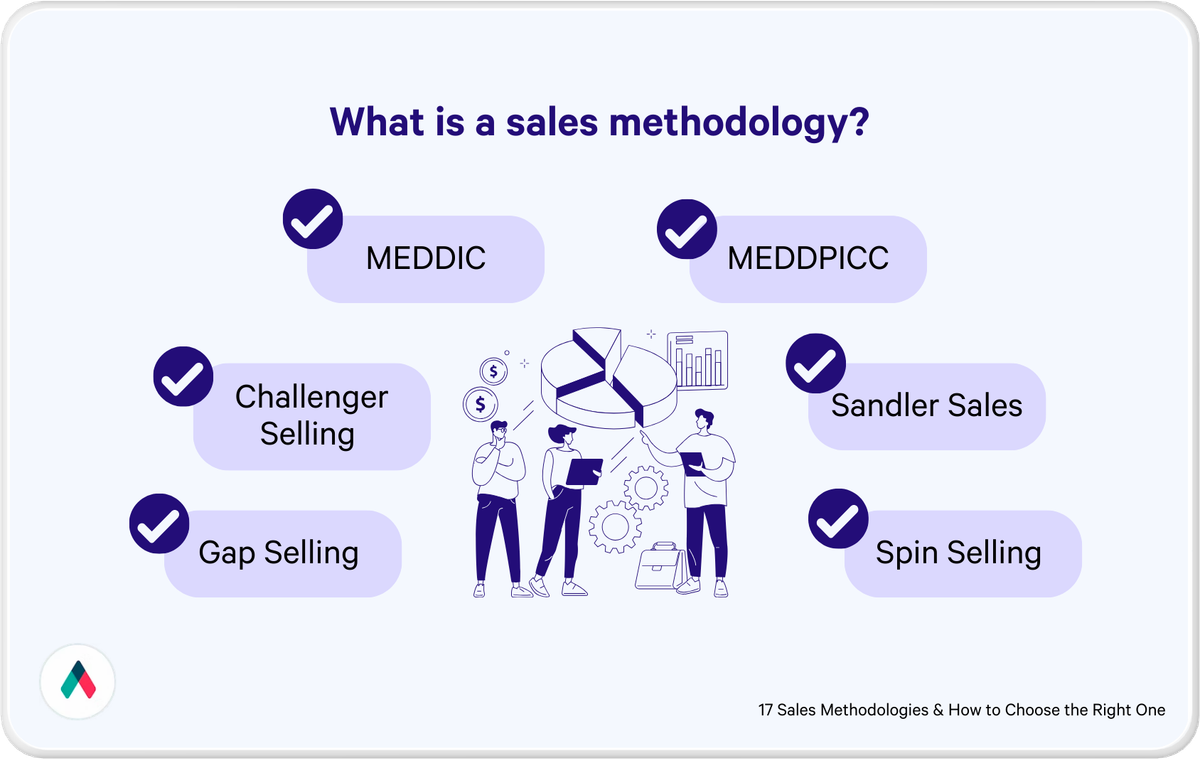In the competitive landscape of sales, a proof of concept (POC) can be a significant growth lever in your sales strategy or GTM.
However, executing a successful POC is an art in itself – it requires a great deal of foresight, competency and process to be effective in practice. This is because POCs can be time sink if performed poorly or on the wrong opportunities, and even lower win rates if not managed well.
In this guide, we'll decipher the role of POCs and share strategic insights that can elevate your game.
What is a sales proof of concept (POC)?
A sales POC is a tangible demonstration of a product or service that substantiates its capabilities and relevance to a target account.
It provides a real-world glimpse into your product's application, addressing the specific needs of the prospect while emphasizing its advantages.
By bringing the benefits of your offering to life alongside using a proven sales methodology, a POC instills trust and bolsters confidence in your product or service.
The benefits of a sales POC approach
Integrating a POC strategy in your sales process can significantly amplify your sales outcomes.
Here’s how:
- Fostering trust and credibility: A POC allows prospects to interact with the product firsthand, cultivating trust and credibility as they witness its potential benefits in action.
- Visualizing the product's functionality: By demonstrating the product in a real-life scenario, a POC helps prospects envision the seamless integration of your product into their operations, effectively addressing known business opportunities or challenges.
- Differentiating your sales approach: Offering a POC can be a differentiator in the sales process, and help set you apart from competitors that may have not have equivalent sales tactics in place to build confidence in their solution or minimize buyer risk post purchase.
- Garnering constructive feedback: A POC serves as a platform to solicit invaluable feedback from potential customers, with wider catchment than what you would get from paying customers. This can be helpful for earlier stage companies where customer insight is critical to product and GTM refinement.
- Cementing long-term customer relationships: A well-executed POC can pave the way for enduring customer relationships, laying a robust foundation for future buyer engagement.
The drawbacks of a sales POC approach
While there are significant benefits to implementing a sales POC, it's important to be aware of the potential drawbacks as well.
Key drawbacks include:
- Resource-intensive: Establishing and maintaining a POC process requires significant planning, coordination, and resources to ensure its success.
- Easy to burn valuable rep time: It can be hard for even experienced sellers to assess POC fit, and so reps can easily lose precious time during the quarter, working deals with buyers that may not be adequately qualified or engaged in the process. This can also be a 'morale-killer', when a prospect goes quiet after significant time invested from the seller.
- Not suitable for all products: Not all products necessarily require a POC. For example, lower average contract value solutions are often more suited to a 'reverse trial'.
Now that we've explored the benefits and drawbacks of a sales POC, let's delve into how you can determine if POCs are suitable for your sales org and when to consider them in the sales cycle.
How to know if POCs are suitable for your sales organization?
Determining whether to pursue a POC requires careful assessment of your sales organization's capabilities and the potential return on investment (ROI).
It's worthwhile taking the following steps before you spin up POC capability in your sales org:
Assess your resources
Evaluate whether your sales organization has the necessary resources, including personnel, time, and budget, to execute a POC effectively.
Consider the availability of technical experts, such as solution engineers, who can support the POC, as well as the financial implications of investing in the required infrastructure or customization.
Evaluate customer readiness
Determine if prospects are willing and able to commit the resources necessary to execute a successful POC.
Engage in open conversations with your prospects, or recently closed sales deals, to understand their level of commitment during the sales process, their organizational readiness, and willingness to actively participate in the POC process.
Analyze the potential return on investment
Assess the potential return on investment (ROI) of the POC, considering both the revenue potential and the customer experience benefits.
It can be helpful to run scenario analysis to assess the potential pipeline and revenue implications of introducing a POC approach - for example, consider what the conservative, balanced and aggressive scenarios would entail for win rates, as well as the intangible benefits such as improved buyer experience and potential referrals or repeat business from opening up your funnel further.
Consider the complexity of the product or service
If your offering is straightforward and easily understood, a POC may not be necessary. However, if your product requires customization, integration with other systems, like an ERP, or a high level of technical expertise to showcase its capabilities, a POC approach may improve your sales efficiency.
When should you propose a POC?
POCs can be proposed at different stages of the sales process, depending on the customer's needs and interests.
Some common cases include when a customer is:
- Considering multiple vendors and needs to evaluate products side-by-side.
- Concerned about the technical feasibility of a solution and needs reassurance.
- In need of significant customization or an integration with existing systems (think finance, IT or HR related platforms.)
Remember, make sure to clearly define the goals and objectives of the POC program before you start changing your sales strategy.
Key strategies for a successful sales POC
When it comes to executing a successful proof of concept sales approach (POC), above all, it's important to implement an approach that is adaptable - ensure that you can make changes without significant strain on your team and existing processes.
Lets dive into some of the key strategies that can significantly improve the likelihood of a successful POC process in your sales org:
1. Collaborate with your prospects
Involve the customer in planning and decision-making, and seek their feedback and input at every stage in the process.
This collaborative approach will ensure that your POC ultimately aligns with their specific needs, increases your buyer's sense of ownership, and builds a stronger relationship between your sellers and prospects.
2. Define clear objectives and success criteria
Before initiating the POC, establish not only objectives that outline what you aim to achieve but also success criteria that can be used to evaluate whether the POC is successful/unsuccessful.
By setting clear goals and metrics, you can focus your efforts and ensure that your POC helps to get you closer to a purchasing decision.
3. Customize your POC
Tailoring your POC will be important to address the unique pain points and requirements of prospects. Research their specific industry, challenges, and goals, and align your POC accordingly.
Customizing the POC demonstrates that you understand their needs and can deliver a solution that meets their specific requirements. This personalized approach increases the chances of a successful POC and improves the overall customer experience.
4. Provide ongoing support and communication
Throughout the POC, maintain regular, proactive communication with your champion and be sure to address any questions, concerns, or issues as they come up.
By being responsive and effective in addressing root concerns, you can demonstrate your commitment to customer success and build their trust and confidence in your offering.
Common challenges with a POC sales approach
Conducting a Proof of Concept (POC) is a complex sales process that can encounter various challenges. Below are some of the most common pitfalls and recommended steps to ensure POCs run smoothly.
| Common POC challenges | Recommended action |
|---|---|
Identifying fit issues early | Conduct thorough needs analysis sessions before the POC to align expectations and objectives. |
Managing scope creep | Clearly define the scope and deliverables of the POC to manage expectations and prevent scope creep. |
Technical glitches | Have IT support on standby and conduct regular testing throughout the POC to catch and address issues early. |
Engagement drop-off | Involve the prospect actively throughout the POC process with regular updates and check-ins to maintain engagement. |
Feedback loops | Implement a structured feedback loop to gather and incorporate prospect insights during and after the POC. |
These measures not only mitigate potential issues but also strengthen the relationship with the prospect, increasing the likelihood of a favorable outcome.
Follow-up strategies post-POC
While your Proof of Concept (POC) is underway, it's crucial to have a strategic plan to maintain the momentum and guide the prospect towards a purchase decision. This section covers effective follow-up strategies that can significantly increase the conversion rate post-POC.
| Follow up tactic | Details |
|---|---|
Immediate follow-up meeting | Schedule a debriefing session immediately after the POC concludes to involve key stakeholders in discussing outcomes and planning next steps. |
Customized proposals | Prepare a tailored proposal based on POC insights that addresses the specific needs highlighted, including pricing and customizations. |
Regular check-ins | Establish a regular cadence of follow-ups via emails or calls to keep the prospect engaged and promptly address any concerns. |
Provide additional resources | Offer resources such as case studies, white papers, or demos that reinforce the value proposition and explore new areas of interest. |
Leverage customer success team | Introduce the customer success team early to build relationships and address the prospect's long-term needs and integration requirements. |
Adopting these proactive follow-up strategies will help ensure that the momentum from the Proof of Concept is not lost but rather leveraged to accelerate the sales cycle. Ultimately, these steps are designed to secure a commitment from the prospect, transitioning smoothly from evaluation to action.
Sales Proof of Concept template
Using a well-crafted Sales Proof of Concept (POC) template can be a significant time-saver and set you and your team on the right path to effectively demonstrate your product's benefits.
A streamlined Sales POC template organizes the demonstration process, ensuring every key feature of your product is showcased in a structured and efficient manner.
Many Qwilr customers use our proposal solution to help create sales POCs, so we created a proposal template that you may wish to use for your own sales process.

Here's how the template is structured:
| Section | What it should cover | Why it matters |
|---|---|---|
Overview | Briefly describes the POC's objectives and the product capabilities to be demonstrated. | Sets the stage for what the client can expect to learn about the product. |
POC timeline | Outlines the start and end dates, including all key milestones throughout the demonstration phase. | Ensures all parties are synchronized on the progress and phases of the demo. |
Success criteria | Specifies the metrics and benchmarks that will determine the POC's success. | Crucial for measuring the effectiveness and impact of the demonstration. |
Video overview | Provides a visual explanation of the product, highlighting its features and benefits. | Helps clients visualize the product in action and understand its practical application. |
Shared next steps | Details the actions to follow the POC, including any necessary adjustments or the next stages of deployment. | Helps maintain momentum post-POC and outlines the path forward. |
Testimonial | Features a quote or case study from a satisfied customer to validate the product’s effectiveness. | Builds credibility and trust with prospective clients. |
Ability to accept POC | Includes a section for the prospect to formally agree to start the POC, ensuring both parties are aligned. | Critical for commitment and engagement, formalizing the start of the POC. |
Contact info | Lists essential contact details for the sales team to facilitate easy communication throughout the POC. | Key to addressing any concerns and ensuring a smooth process. |
This template is designed to facilitate a comprehensive and efficient proof of concept process that can help demonstrate your product's value effectively, build trust with potential customers, and ultimately lead to successful sales outcomes.
Final thoughts
Implementing these strategies and harnessing the power of the right tools empowers you to master the art of the sales POC. A well-executed POC not only instills confidence in your potential customers but also serves as the cornerstone of robust, enduring relationship with your buyer.
About the author

Brendan Connaughton|Head of Growth Marketing
Brendan heads up growth marketing and demand generation at Qwilr, overseeing performance marketing, SEO, and lifecycle initiatives. Brendan has been instrumental in developing go-to-market functions for a number of high-growth startups and challenger brands.








